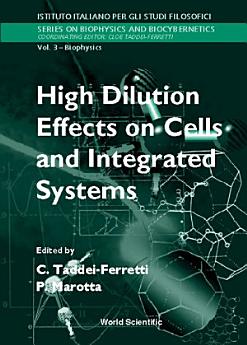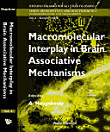High Dilution Effects On Cells And Integrated Systems - Proceedings Of The International School Of Biophysics
Cloe Taddei-ferretti · P Marotta
Mar 1998 · Series On Biophysics And Biocybernetics Book 3 · World Scientific
Ebook
396
Pages
family_home
Eligible
info
reportRatings and reviews aren’t verified Learn More
About this ebook
High dilution effects constitute a major problem on the frontier of biophysics. The reported effects on simple and complex biological systems range from in vitro and in vivo models to cellular metabolism regulation, the immune system, the nervous system, intoxicated organs and organisms, and developmental models. The physical properties of high dilutions have been considered, such as the organization properties of water molecules in the presence and after the presence of solute molecules, the energy characteristics of empty and full water clusters, and their dynamical interactions with proteins. Among the mechanisms responsible for the high dilution effects, a non-molecular transfer of information has been hypothesized.
Contents:Introductory Lecture:Basic Research on High Dilution Effects (M Bastide)Biophysical Aspects:Hormesis (M Oberbaum)Effects of Metal High Dilutions on Cells and Integrated Systems (J Cambar et al.)Stimulation of Self-Recovery by the Application of Low Doses. Studies with Cells (R Van Wijk & F A C Wiegant)Clinical Evidences:Water and the Diagnosis and Treatment of Electromagnetic Hypersensitivity (C W Smith)Membrane Antioxidants. Mechanism of Action of Antioxidants in Ultra-Low Doses (E B Burlakova)High Dilution Effects of Strychnos Nuxvomica L on Hypothalamic Neurons and Andrenergic Nerve Endings of Alcoholic Rats (N C Sukul et al.)Structure and Communication:Nonlinear Effects at Low Levels of Signal Intensities and Biocommunication (F A Popp)Structure-Function Properties of Water Clusters in Proteins (D Arad)Experimental Detection of the Existence of Structures in High Dilutions (G S Anagnostatos)and other papers
Readership: Students and researchers in biophysics, pharmacology, toxicology, medicine and physiology.
keywords:Biophysics;Biocybernetics;Cells;Integrated Systems;Biological Systems
Contents:Introductory Lecture:Basic Research on High Dilution Effects (M Bastide)Biophysical Aspects:Hormesis (M Oberbaum)Effects of Metal High Dilutions on Cells and Integrated Systems (J Cambar et al.)Stimulation of Self-Recovery by the Application of Low Doses. Studies with Cells (R Van Wijk & F A C Wiegant)Clinical Evidences:Water and the Diagnosis and Treatment of Electromagnetic Hypersensitivity (C W Smith)Membrane Antioxidants. Mechanism of Action of Antioxidants in Ultra-Low Doses (E B Burlakova)High Dilution Effects of Strychnos Nuxvomica L on Hypothalamic Neurons and Andrenergic Nerve Endings of Alcoholic Rats (N C Sukul et al.)Structure and Communication:Nonlinear Effects at Low Levels of Signal Intensities and Biocommunication (F A Popp)Structure-Function Properties of Water Clusters in Proteins (D Arad)Experimental Detection of the Existence of Structures in High Dilutions (G S Anagnostatos)and other papers
Readership: Students and researchers in biophysics, pharmacology, toxicology, medicine and physiology.
keywords:Biophysics;Biocybernetics;Cells;Integrated Systems;Biological Systems
About the author
C Taddei-Ferretti (Istituto di Cibernetica, Italy);P Marotta (Université Louis Pasteur & Istituto Italiano per gli Studi Filosofici, Italy)
Rate this ebook
Tell us what you think.
Reading information
Smartphones and tablets
Install the Google Play Books app for Android and iPad/iPhone. It syncs automatically with your account and allows you to read online or offline wherever you are.
Laptops and computers
You can listen to audiobooks purchased on Google Play using your computer's web browser.
eReaders and other devices
To read on e-ink devices like Kobo eReaders, you'll need to download a file and transfer it to your device. Follow the detailed Help Center instructions to transfer the files to supported eReaders.








